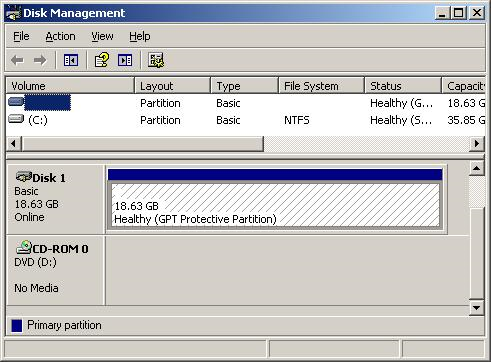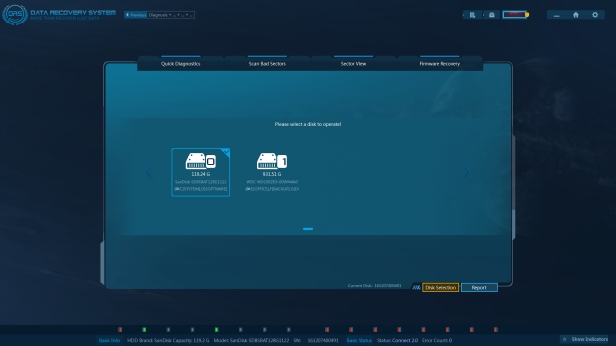What is a CDFS file? The CDFS file extension indicates to your device which app can open the file. However, different programs may use the CDFS file type for different types of data. While we do not yet describe the CDFS file format and its common uses, we do know which programs are known to open these files, as we receive dozens of suggestions from users like yourself every day about specific file types and which programs they use to open them. There are multiple types of file systems, including FAT12, FAT16, FAT32, and NTFS for devices under Windows OS, Ext2, Ext3, and Ext4 for devices under Linux, HFS/HFS+ for storage media in Mac OS X, and ISO-9660, UDF (Universal Disc Format), and CDFS (Compact Disc File System) for optical disc. Cdfs is a read-only file system that addresses various issues such as accessing data on disk, interacting with the cache manager, and handling various I/O operations such as opening files, performing reads on a file, retrieving information on a file, and performing various control operations on the file system. The Cdfs file system is included with the Microsoft Windows operating system.
Many people share .cdfs files without attaching instructions on how to use it. Yet it isn’t evident for everyone which program a .cdfs file can be edited, converted or printed with. On this page, we try to provide assistance for handling .cdfs files.

- CDfs is a virtual Linux file system that provides access to individual data and audio tracks on compact discs. A compact disc mounted with the 'CDfs' driver appears as a collection of files, each representing a single track. It supports the following track types:. Red Book audio: Appears as a WAV file; reading from it will start CDDA ripping.
- The system file installed through cdfs.sys is related to your computer’s CD drive. The process is called CD-ROM file system driver and this is part of the Microsoft Windows OS software that installed your OS. This file enables your CD-ROM drive to function. If this file is disabled, uninstalled or deleted; your CD drive will not work.
1 filename extension(s) found in our database.
.iso - ISO 9660 Cd-Rom Disk Image
The ISO disk image files are related to WinISO. ISO 9660 file system images (ISO images) are a common way to electronically transfer the contents of CD-ROMs. Cd writer softwares provides support for burning ISO images to CDs.
- Application:
- WinISO
- Category:
- Disk Image files
- Mime-type:
- application/octet-stream
- Magic:
- - / -
- Aliases:
- 9660, cdfs
- ISO 9660 Cd-Rom Disk Image related extensions:
- .iso
- ISO 9660 Cd-Rom Disk Image
Naturally, other applications may also use the .cdfs file extension. Even harmful programs can create .cdfs files. Be especially cautious with .cdfs files coming from an unknown source!
Can't open a .cdfs file?
When you double-click a file to open it, Windows examines the filename extension. If Windows recognizes the filename extension, it opens the file in the program that is associated with that filename extension. When Windows does not recognize a filename extension, you receive the following message:
Windows can't open this file:
example.cdfs
To open this file, Windows needs to know what program you want to use to open it. Windows can go online to look it up automatically, or you can manually select one from a list of programs that are installed on your computer.
To avoid this error, you need to set the file association correctly.
- Open Control Panel > Control Panel Home > Default Programs > Set Associations.
- Select a file type in the list and click Change Program.
The .cdfs file extension is often given incorrectly!
According to the searches on our site, these misspellings were the most common in the past year:

cdds, cdf, cdfx, cds, cfs, dfs, sdfs
Is it possible that the filename extension is misspelled?
Similar file extensions in our database:
- .cdf
- ANDI/netCDF Chromatography Data
- .cdf
- Microsoft Channel Definition Format Data
- .cds
- ChemDraw Stationery Document
- .cdf
- Affymetrix Chip Description File
- .cfs
- Compact File Set
- .cdf
- netCDF Data
Operating systems
DataTypes.net currently supports the following operating systems:

Windows XP/Vista, Windows 7/8, Windows 10, CentOS, Debian GNU/Linux, Ubuntu Linux, FreeBSD, Mac OS X, iOS, Android
If you find the information on this page useful, please feel free to link to this page.
If you have useful information about the .cdfs file format, then write to us!
Please help us by rating this page below.
A Distributed File System (DFS) as the name suggests, is a file system that is distributed on multiple file servers or multiple locations. It allows programs to access or store isolated files as they do with the local ones, allowing programmers to access files from any network or computer.
The main purpose of the Distributed File System (DFS) is to allows users of physically distributed systems to share their data and resources by using a Common File System. A collection of workstations and mainframes connected by a Local Area Network (LAN) is a configuration on Distributed File System. A DFS is executed as a part of the operating system. In DFS, a namespace is created and this process is transparent for the clients.
DFS has two components:
- Location Transparency: Location Transparency achieves through the namespace component.
- Redundancy: Redundancy is done through a file replication component.
In the case of failure and heavy load, these components together improve data availability by allowing the sharing of data in different locations to be logically grouped under one folder, which is known as the “DFS root”.
How To Play Cdfs Format

It is not necessary to use both the two components of DFS together, it is possible to use the namespace component without using the file replication component and it is perfectly possible to use the file replication component without using the namespace component between servers.
Features of DFS
- Transparency:
- Structure transparency: There is no need for the client to know about the number or locations of file servers and the storage devices. Multiple file servers should be provided for performance, adaptability, and dependability.
- Access transparency: Both local and remote files should be accessible in the same manner. The file system should be automatically located on the accessed file and send it to the client’s side.
- Naming transparency: There should not be any hint in the name of the file to the location of the file. Once a name is given to the file, it should not be changed during transferring from one node to another.
- Replication transparency: If a file is copied on multiple nodes, both the copies of the file and their locations should be hidden from one node to another.
- User mobility: It will automatically bring the user’s home directory to the node where the user logs in.
- Performance: Performance is based on the average amount of time needed to convince the client requests. This time covers the CPU time + time taken to access secondary storage + network access time. It is advisable that the performance of the Distributed File System be similar to that of a centralized file system.
- Simplicity and ease of use: The user interface of a file system should be simple and the number of commands in the file should be small.
- High availability: A Distributed File System should be able to continue in case of any partial failures like a link failure, a node failure, or a storage drive crash.
A high authentic and adaptable distributed file system should have different and independent file servers for controlling different and independent storage devices.
History
What Is Cdfs File System How To Open
The server component of the Distributed File System was initially introduced as an add-on feature. It was added to Windows NT 4.0 Server and was known as “DFS 4.1”. Then later on it was included as a standard component for all editions of Windows 2000 Server. Client-side support has been included in Windows NT 4.0 and also in later on version of Windows.
Linux kernels 2.6.14 and versions after it come with an SMB client VFS known as “cifs” which supports DFS. Mac OS X 10.7 (lion) and onwards supports Mac OS X DFS.
Applications
- NFS: NFS stands for Network File System. It is a client-server architecture that allows a computer user to view, store, and update files remotely. The protocol of NFS is one of the several distributed file system standards for Network-Attached Storage (NAS).
- CIFS: CIFS stands for Common Internet File System. CIFS is an accent of SMB. That is, CIFS is an application of SIMB protocol, designed by Microsoft.
- SMB: SMB stands for Server Message Block. It is a protocol for sharing a file and was invented by IMB. The SMB protocol was created to allow computers to perform read and write operations on files to a remote host over a Local Area Network (LAN). The directories present in the remote host can be accessed via SMB and are called as “shares”.
- Hadoop: Hadoop is a group of open-source software services. It gives a software framework for distributed storage and operating of big data using the MapReduce programming model. The core of Hadoop contains a storage part, known as Hadoop Distributed File System (HDFS), and an operating part which is a MapReduce programming model.
- NetWare: NetWare is an abandon computer network operating system developed by Novell, Inc. It primarily used combined multitasking to run different services on a personal computer, using the IPX network protocol.
Cdfs File System On Cd
Working of DFS
There are two ways in which DFS can be implemented:
- Standalone DFS namespace: It allows only for those DFS roots that exist on the local computer and are not using Active Directory. A Standalone DFS can only be acquired on those computers on which it is created. It does not provide any fault liberation and cannot be linked to any other DFS. Standalone DFS roots are rarely come across because of their limited advantage.
- Domain-based DFS namespace: It stores the configuration of DFS in Active Directory, creating the DFS namespace root accessible at <domainname><dfsroot> or <FQDN><dfsroot>
Advantages
- DFS allows multiple user to access or store the data.
- It allows the data to be share remotely.
- It improved the availability of file, access time and network efficiency.
- Improved the capacity to change the size of the data and also improves the ability to exchange the data.
- Distributed File System provides transparency of data even if server or disk fails.
Disadvantages
- In Distributed File System nodes and connections needs to be secured therefore we can say that security is at stake.
- There is a possibility of lose of messages and data in the network while movement from one node to another.
- Database connection in case of Distributed File System is complicated.
- Also handling of the database is not easy in Distributed File System as compared to a single user system.
- There are chances that overloading will take place if all nodes tries to send data at once.
Attention reader! Don’t stop learning now. Get hold of all the important CS Theory concepts for SDE interviews with the CS Theory Course at a student-friendly price and become industry ready.
What Is Cdfs File System
Recommended Posts:
If you like GeeksforGeeks and would like to contribute, you can also write an article using contribute.geeksforgeeks.org or mail your article to contribute@geeksforgeeks.org. See your article appearing on the GeeksforGeeks main page and help other Geeks.

Please Improve this article if you find anything incorrect by clicking on the 'Improve Article' button below.